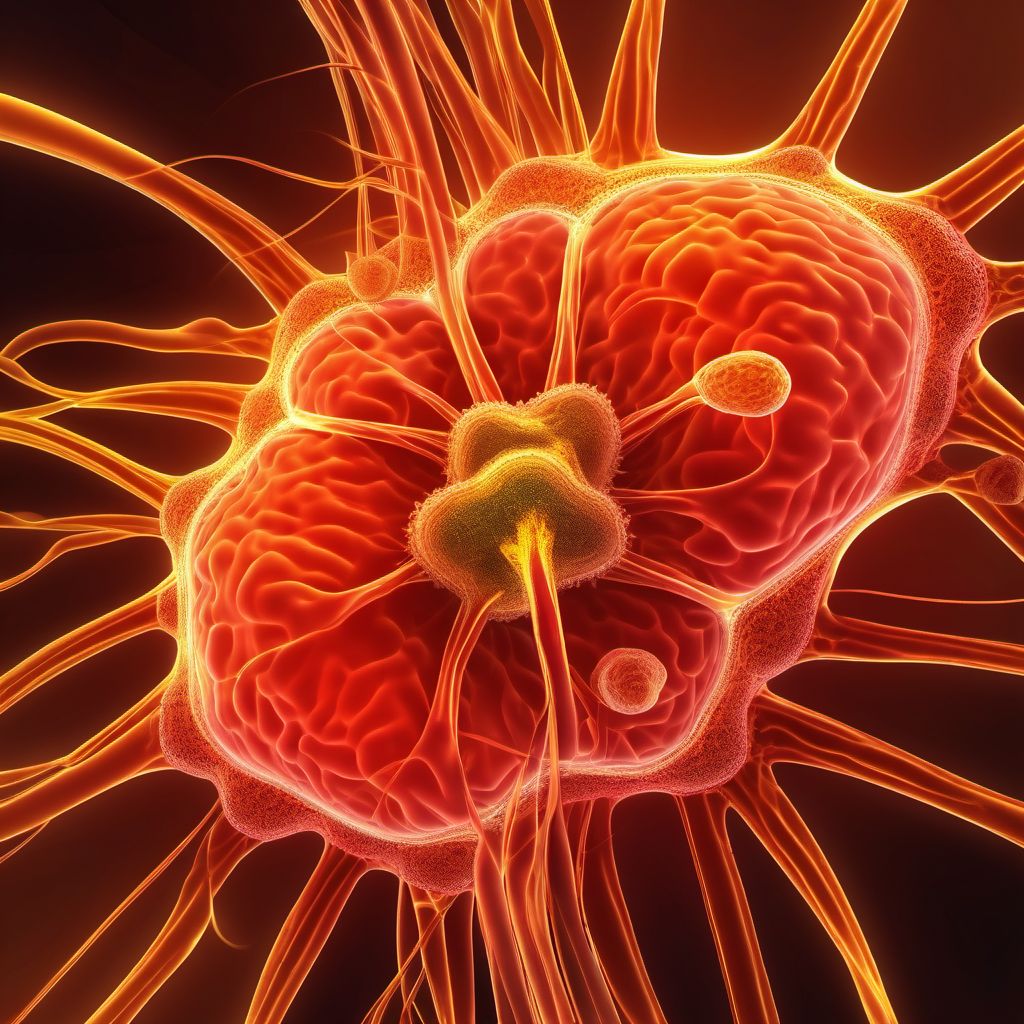
Tuberculosis of adrenal glands Save
ICD-10 code: A18.7
Chapter: Certain infectious and parasitic diseases
Tuberculosis of adrenal glands: Causes, Symptoms and Treatment
Tuberculosis of adrenal glands, also known as adrenal tuberculosis, is a rare but serious form of tuberculosis that affects the adrenal glands. These glands are located on top of the kidneys and are responsible for producing hormones that regulate the body's metabolism, blood pressure, and response to stress.
Adrenal tuberculosis usually develops as a result of the spread of tuberculosis bacteria from other parts of the body to the adrenal glands. This can occur through the bloodstream or lymphatic system, or through direct spread from nearby organs such as the lungs or kidneys.
Symptoms of Adrenal Tuberculosis
The symptoms of adrenal tuberculosis can be vague and non-specific, making it difficult to diagnose. Common symptoms include:
- Unexplained weight loss
- Fever and chills
- Weakness and fatigue
- Nausea and vomiting
- Abdominal pain or discomfort
- Joint pain
In more advanced cases, adrenal tuberculosis can cause symptoms such as:
- Excessive thirst and urination
- High blood pressure
- Muscle wasting
- Depression and anxiety
- Hypoglycemia (low blood sugar)
Treatment of Adrenal Tuberculosis
Adrenal tuberculosis is typically treated with a combination of antibiotics and corticosteroids. The antibiotics are used to kill the tuberculosis bacteria, while the corticosteroids are used to reduce inflammation and prevent damage to the adrenal glands.
In some cases, surgery may be required to remove the affected adrenal gland. This is usually only necessary if the gland is severely damaged or if there is a risk of the infection spreading to other parts of the body.
It is important to start treatment for adrenal tuberculosis as soon as possible to prevent complications and reduce the risk of spreading the infection to others. If you suspect that you may have adrenal tuberculosis, it is important to see a healthcare provider for diagnosis and treatment.